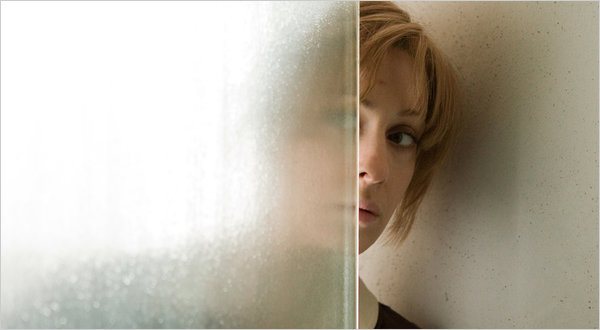If the most perfect post-Hitchcockian mystery in cinema continues to be Francis Ford Coppola’s 1974 between-Godfathers masterpiece, The Conversation, Giuseppe Capotondi’s debut film, The Double Hour, comes close enough to at least be mentioned in the same conversation. Both films present narratives that leave the viewer unsettled & scrambling to sort out what might or might not be happening, both feature great acting, and both (not coincidentally, I suspect) involve a central character devoted to surveillance audio.¹
Where The Conversation focuses on a paranoid detective played by Gene Hackman who takes a case in which he learns that the roles of victim & villain are not what they seem, The Double Hour focuses on Guido, a widowed ex-cop, & Sonia, a half-Slovenian hotel maid, in Turin, who meet at a speed dating event & slowly start to get involved. The film is primarily told from the perspective of Sonia, played by Russian actress, Ksenia (think Xenia) Rappoport, who won a best actress award for the role in the 2009 Venice Film Festival. Filippo Timi, who won a best actor nod at the same festival for his role as Guido, looks a lot like Javier Bardem, maybe a little shorter & more trim, especially with a close-cropped beard, even down to the soulful eyes. He is balanced by his best friend, the more phlegmatic Dante, who is still on the police force, one of maybe a half dozen secondary figures who play crucial roles in the various sleights of narrative going on simultaneously throughout the film. Sonia & Guido find themselves in the wrong place at the wrong time, an art heist carried out with Mission Impossible precision, shots are fired & we learn soon enough that both characters have been hit. What happens from this point forward, though, is almost impossible to discuss without presenting major spoilers other than to say that it’s not clear, ultimately, who the victims really are, with some suggestion that it’s possible for the criminal to be the true victim, even as they “succeed.”
My wife & I left the theater with rather different perspectives on the film’s resolution. She felt that the ending, in front of Buenos Aires’ Puente de la Mujer bridge – a choice as subtle as Guido & Dante – was true to the characters. I felt that the film abruptly stopped its endless roller coaster of Rube Goldberg-like narrative games when I could think of a half dozen plausible means for perpetuating the process. She accused me of wanting a male ending to what she saw as a film about a woman & that’s probably not as wrong as I wish it was. As I slept on the experience overnight, I concluded that Capotondi was exactly right ending it the way he did, tho maybe not for the same reasons as my wife’s. This is a film that will haunt you.
One of the most intriguing aspects of this film is the discrepancy between its master narrative, in which no detail is unimportant (Why is the Slovenian maid learning Spanish?), and a series of major events – suicides, funerals, people buried alive in the woods – that almost literally don’t fit at all. This is not, I believe, simply a consequence of editing removing parts of a tale that has grown too shaggy to hold together, it feels completely intentional. A substantial part of this story is “told by” – presented from the vantage of – a character in a coma. Elements of fact & those of dream commingle. Details are not presented reliably, and absolutely not in temporal sequence. You are left to do the sorting, with the help only of Dante, concerned as he is with people’s stories, being the judgmental sort, a true cop.
Capotondi wants you to feel the opacity of irreducible details even as he is compulsive about those that lead us to the bridge. Not every loose end can be ascribed to dream² & not every important clue is “real.”³ The one detail that marks this border, this threshold, right at the film’s end, is precisely the one that crosses the line. Two characters enter an elevator & it hits you right in the stomach, the teleology of story-telling & the phenomenological anarchy of life coming face to face, not so much what those two are doing, but more so what the third character is not. It is, frankly, much more powerful than any conclusion I could concoct.
The Double Hour took two years to make it to the US, and was released to the art house circuit with little fanfare. Word-of-mouth seems to have made up for this – we saw it on a Sunday night in the middle of a three-day weekend in a theater that was completely sold out.
¹ If The Conversation feels like a star-studded production today, it’s worth recalling that several of its actors – Harrison Ford, Robert Duvall, Billy Dee Williams – were then unknowns or close to it (Duvall & Williams are not even credited for their performances, Ford is still pre-Han Solo).
² What is Guido soldering, and why?
³ The film is worth a second viewing just to see that Sonia’s father is doing, and why the priest uses the wrong name at the second funeral. They are, of course, the same person.






